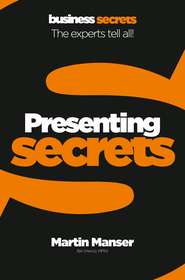По всем вопросам обращайтесь на: info@litportal.ru
(©) 2003-2024.
✖
Mindpower
Автор
Год написания книги
2019
Настройки чтения
Размер шрифта
Высота строк
Поля
We tend to have one side of the brain that is more dominant than the other, though great scientists tend to be very well-balanced in these terms. Einstein, for exampled, enjoyed activities such as sailing, art and playing the violin.
The significance of this is:
• If you are undeveloped on one side of the brain, work at strengthening and nurturing the unused potential of the less dominant side, so that it becomes more effective. If you do this, you will find that, rather than being weakened in the area in which you are currently stronger, you will actually become stronger in both areas, and the overall performance of your mind will be improved.
• Make sure that a team of colleagues working together has a balance of those who enjoy logical, analytical thinking and those whose style is more intuitive and creative.
Work at developing your brain’s unused potential.
1.2 Strengthen the right side of your brain (#ulink_eafc60fc-a231-50b4-96c1-653818d822bd)
If the left side of your brain is more dominant, then it’s time to strengthen the right side so that you become more balanced.
There are many ways in which you could strengthen the right side of your brain. They include:
• Dream dreams. Remove yourself from your cold analysis and use your imagination. You could even write down your dreams.
• See the big picture. Go beyond the details in which you are immersed and see the widest possible dimensions.
case study By personality, the left side of my brain is more dominant. After leading seminars on writing clear English, I realized that I needed to branch out as the market place was becoming saturated. I wrestled with this problem for some time, trying logically to think through ways of dealing with it. One day, when I was not thinking about this problem, the thought struck me: I should intentionally target managers who had deliberately chosen a career that didn’t initially involve writing. In particular, I focused on accountants and engineers. The success lay in being open to fresh, ‘outside-the-box’ thinking and then being proactive: actively deciding a new strategy and formulating a plan to capture a new market.
• Take risks. Don’t always be cautious and play it safe (but don’t be reckless!). Do something you usually do differently – go a different way to work; experiment with different foods or ways of cooking.
• Change your perspective. Be on the lookout for positive ways of grasping new opportunities, rather than seeing them as a threat.
• Be creative. Think of imaginative ways of expressing a problem you are currently dealing with. Draw it, or something that could represent it. What colour would it be? What shape and dimensions?
• Take a break from work. Do something physically active – go to the gym, go dancing. A healthy body will develop a healthy mind.
• Develop your intuition. When random thoughts occur to you when you are doing something that is unrelated to work, such as having a shower or driving home from work, don’t ignore them. Give them your attention: these thoughts come from your subconscious.
Take something you usually do and do it differently.
1.3 Strengthen the left side of your brain (#ulink_4a04e3cf-e543-5506-a65e-8a12082bf4db)
If the right side of your brain is more dominant, then it’s time to strengthen the left side to achieve that elusive but rewarding balance.
Again, there are many ways in which you could strengthen the left side of your brain. Here are a few:
• Delve into the details. Go beyond the big picture to fill in details. If you’re not sure what details to think about, answer the following question words: ‘who?’, ‘where?’, ‘when?’, ‘what?’, ‘how?’ and ‘why?’
• Become more organized. Make a list of things you need to do. Make notes.
one minute wonder Give yourself dates for achieving goals. Break the goals down into manageable and timed tasks so that you have clear and definite scheduled tasks. Commit yourself to doing that, and tell a friend or colleague to contact you a day after the set time to make sure you have done it.
“He that cannot reason is a fool. He that will not is a bigot. He that dare not is a slave.”
Andrew Carnegie, Scottish-born industrialist and philanthropist
• Plan ahead. Think of a task that you need to do. Work out all the steps that you need to take to achieve that aim. Then put all those stages in the most logical order to fulfil them most effectively.
• Think in the long term. Set yourself long-term goals and then analyse those goals, working out intermediate steps that are realistic and achievable. It’s important to write them down: putting them down on paper will help you visualize and concentrate on the goals.
• Take firm decisions. Switch off the television earlier than usual to get more sleep. Resolve to develop new, beneficial habits, such as walking more, going to the gym or playing chess. Get friends to help you if necessary, or use local clubs.
• Train yourself to become more logical. Work at solving puzzles, such as Sudoku or crossword puzzles, however easy or difficult they are.
• Train your memory. Deliberately set yourself to learn phone numbers or spellings that you find difficult to remember.
Go beyond the big picture and begin to fill in the details.
1.4 Identify your learning style (#ulink_0a06b01c-38b9-5363-b1b3-eb9d37a01026)
People learn in different ways. If you want to use your mind effectively, you will need to know the best way in which you learn. There are three main styles of learning, which are allied to our senses.
• Visual learners. Such people like to see information in pictures, diagrams, charts, tables and in writing.
• Auditory learners. They like to listen to information and then discuss it, listening to what others say to help them learn.
• Kinesthetic learners. These people like to be active and learn by doing. They are attuned to the feel and movement of things.
case study The original working group that met to develop a new marketing strategy was made up of three academically inclined graduates, Stephen, Andrew and Greta, who were very gifted at logical and verbal arguments. They loved to discuss the detailed wording of the strategy and tactics, but never made any real progress on the main part of the campaign. When Ros joined the committee, everything changed. Her skills were on the creative and visual, ‘thinking outside-the-box’ side. She quickly enabled the whole group to move on, as she drew pattern diagrams and flow charts of the work involved. This new way of working resulted in fresh ideas that stirred the whole committee into action to tackle the campaign.
Personal learning
Knowing where your preferences lie is the first step. You can then use that knowledge as a basis to challenge yourself to extend your range of learning styles. The aim is to be balanced and well-adjusted so that you learn in ways that are less familiar to you and are not your preferred style. Seek opportunities to practise a different style.
Team development
If you work in a team, make sure that other members of the team have different learning styles so that you complement one another.
Presentations
If you are presenting information to others, you should be aware that people learn in different ways. Good presenters use a multi-sensory approach to include different styles of learning so that every member of the audience is able to take in the presentation effectively. This means that you should provide visual aids that illustrate your argument, give headings to support it, and provide opportunities for discussion and further expression through stories and role play.
If you work in a team, make sure that its members have different learning styles to complement one another.
1.5 Unleash your creativity (#ulink_2ba6efcb-76f3-5267-a079-c5a4f83ee338)
The American inventor Thomas Edison said, “Genius is one percent inspiration and ninety-nine percent perspiration”. You develop your creativity by hard work…and also by allowing room to receive and harness inspiration, when it comes.
Here are five steps to help you develop your creative thinking.
1 Change your way of doing things. Read more widely; pick up a magazine on a subject that you don’t normally look at or read a novel by an author unfamiliar to you. Take up a new hobby – you don’t have to be the best in the world; just enjoy it. It’ll help you develop your personality.
case study The music market in around 2001 was in a mess: CDs were expensive and were difficult to transport; MP3 players were poor quality and short on memory; and it was difficult to get hold of MP3 files legally and easily. The creative combination of Apple’s iPod and iTunes solved all these problems and also gave the company 75% dominance of the digital music market in both hardware and software.
2 Be open to fresh ideas. A new thought or solution to a problem may suddenly occur to you, especially when you are not thinking directly about the problem. Evaluate the insight that has come to you, and test it to see if it is useful and worth pursuing. For more on thinking creatively, see Secret 3.4.












